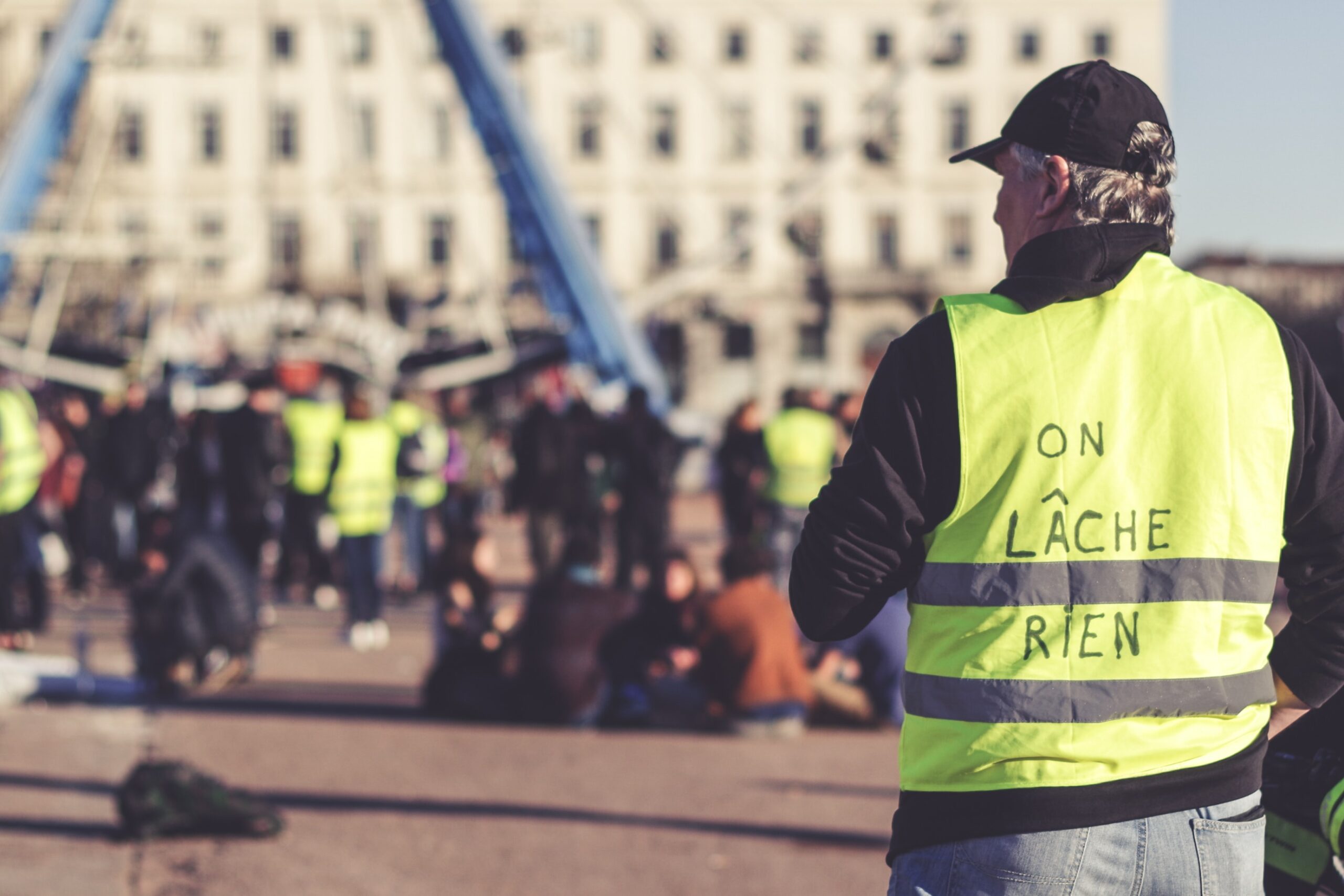Why the French understanding of strikes is unique among Western democracies
“Je ne suis pas le prisonnier de votre système (I am not the prisoner of your system)” says the writing on a cardboard sign held by a middle-aged man dressed up as an inmate. He is standing in the streets of Paris, in-between burning piles of trash and an angry mob of protestors. Parisians around him carry on having their apéro unbothered, a symbolic picture.
On March 16, 2023, the French government under Emmanuel Macron pushed through its controversial retirement reform circumventing the parliament. Article 49 paragraph 3 of the French constitution allows the government to impose the regulation without a vote of the Assemblé Nationale, the lower chamber of Congress. Bypassing the citizens’ representatives is a drastic measure in a democratic republic. The country’s semi-presidential system grants the president extensive powers. Some even speak of a “Monarque sans couronne (a monarch without a crown)“ and a rather unique description of a Western democracy’s head of state.
The current constitution of the so-called 5th Republic was first introduced by then-president Charles de Gaulle in 1958 and immediately encountered heavy opposition from the Socialists for awarding too much power to the president. In the year 2023, France’s current president faces immense critique once again. Macron first presented his reform, which aims to raise the retirement age from 62 to 64 with a minimum total time of 43 years of contributions, in the fall of 2019. He justifies the decision with an ageing population and growing deficits in the French pension system. His promises include a balanced pension fund by 2030 and the simplification of the fragmented retirement structure.
Several professions once belonging to a higher pension category are downgraded and included in a new category along with other professions. As this predominantly affects the public service sector, its workers took to the streets to vent their discontent caused by this strong sense of injustice. Anger, and ultimately resistance, among the population resulted in the rise of the Gilets Jaunes (the Yellow Vests) starting in 2019. The grassroots movement has repeatedly paralysed public life all throughout France through strikes in the transportation, health, education, and energy industries. The demonstrations have reached an all-time high in 2023, upholding vigour for months.
The semi-presidential political system, and the resultant authoritative position Macron finds himself in, might be a legitimate prerequisite for resentment among the population. It is, however, not the sole reason for the unique French approach to protest. Movements in European countries such as Portugal, Poland, and Lithuania, governed in a comparable semi-presidential system, fundamentally differ from those in France. On top of a resolute work stop, the French opt for the leverage of occupations and blockades of oil refineries and other essential infrastructure. Regular public life thus quickly faces drastic restrictions. Where does the French stamina originate from then?
France’s strike movements do not necessarily differ from those of other countries in their amount, but rather in their gravity. From 2000 to 2009, France faced 127 strike days, while the numbers in Spain (152) and Greece (196) were significantly higher, as stated by the public broadcasting service France Culture. Cyprus even doubled that number from 2010 to 2019. What makes the French protests stand out in international news coverage is their visibility in the streets. Some historians attribute this phenomenon to historical reasons. Protests were manifested across the 19th and 20th centuries as a way of resolving political crises, the most prominent example, undoubtedly, being the French Revolution. Its images live on; in Les Misérables, in La Marseillaise, the country’s anthem; even in advertising, marketing, and essentially in people’s understanding of political participation.
The protests might not be a unique characteristic in a global context, as other countries such as Argentina experience influential grassroots movements as well. Yet, from a European perspective, they are exceptional.
Strikes have become an intangible cultural artefact in France. Experts speak of a culture of dispute instead of a culture of negotiation. Some live by the maxim “magnifier la lutte (magnifying the fight)”, ultimately labelling demonstrations as a Grand Narrative, an account providing legitimation for how a totality of historical events and social norms shape a country’s culture. In the Middle Ages, 1229 to be exact, universities in Paris stopped class to protest against the death of several students who were killed by royal sergeants. In times of conflict, other European universities would relocate to different cities. In Paris, however, they went on strikes. The protests back then were targeted towards the king and aimed to get the royal authorities’ attention. Nowadays, they address the president, the so-called sovereign without a crown, and intent to get the government’s attention. The similarities nonetheless seem evident.
Others find an explanation in the reference that some of the Gilets Jaunes make to “Mai 1968”, a month of chaos and general strikes carried out by a student movement. The situation was originally caused by unrest and riots in the Paris University Sorbonne, but the bigger picture was a matter of the students’ disapproval of the conservative French society, shaped by World War II. The youth felt underrepresented and could neither identify themselves with traditionalism nor express themselves within the political system. Old values and norms felt outdated.
The multi-faceted crisis resulted in a nationwide shutdown, barricades in Paris’ student quarter, and police violence. A year later, in April 1969, Charles de Gaulle resigned as president. The memory of Mai 1968 lives on and is still present in the country’s political landscape. Whether or not the current protests will force Emmanuel Macron to leave office, is speculation. Two no-confidence votes against the government failed. French democracy could still falter after the pension reform takes effect on September 1st.
Article 49.3 is an instrument available to the government allowing it to continue operating despite a relative or narrow majority in the National Assembly. It is thus a last resort the government does not need to employ if it were to command a comfortable majority. Mechanisms such as an absolute majority are designed to make democracy more representative. By governing with only a small majority or even bypassing the parliament when lawmaking, political leaders also bypass the elected representatives of the people. Political participation, for instance in the shape of protest, and the government’s responsiveness to public opinion are crucial to a healthy and flourishing democracy. After all, strikes and demonstrations are measures to hold the government responsible, influence policy-making and a way to callout public authorities in case of wrongdoings.



